America’s national parks offer some of the most breathtaking landscapes on Earth, yet many visitors never experience these natural wonders from the comfort of a train car. Rail travel through protected wilderness areas provides a unique perspective that’s impossible to achieve from hiking trails or scenic drives—you’re moving through pristine environments while relaxing in climate-controlled comfort. Train routes that traverse or connect national parks combine the romance of rail travel with access to some of the continent’s most spectacular scenery.
Here’s a list of 15 National Park train routes that deliver unforgettable views from your window seat.
Alaska Railroad to Denali

The Alaska Railroad’s flagship route stretches 356 miles between Anchorage and Fairbanks, passing directly through Denali National Park during the journey’s most scenic portion. Passengers traveling in glass-dome cars get unobstructed views of North America’s tallest peak when weather conditions cooperate.
The train crosses multiple river valleys and tundra expanses where caribou, moose, and occasionally grizzly bears appear alongside the tracks. During clear days, Mount Denali dominates the northern horizon for nearly two hours of the eight-hour journey.
Grand Canyon Railway

This restored heritage railroad covers 65 miles between Williams, Arizona, and the South Rim of Grand Canyon National Park, following the same route that brought tourists to the canyon’s edge starting in 1901. Steam and diesel locomotives pull vintage passenger cars through high desert and ponderosa pine forests before arriving at the rim where the Colorado River has carved its famous mile-deep gorge.
The train’s approach to the canyon builds anticipation gradually—passengers see hints of the chasm through the trees before reaching the dramatic reveal at Grand Canyon Village. Wild West characters often board the train during the journey, adding entertainment between scenic highlights.
Like Travel Pug’s content? Follow us on MSN.
Cass Scenic Railroad
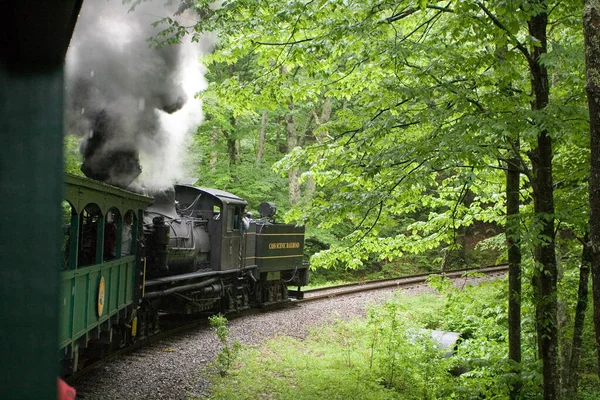
West Virginia’s Cass Scenic Railroad uses authentic Shay locomotives to climb nearly 2,500 feet through the Monongahela National Forest, reaching the summit of Bald Knob, where panoramic views stretch across multiple mountain ranges. The steam engines were originally built for logging operations in these same mountains, making the 11-mile journey historically authentic as well as visually stunning.
Passengers experience the engineering marvel of switchbacks and steep grades while the locomotive works hard enough that you can hear every chuff of the steam engine. The railroad operates within Cass Scenic Railroad State Park, which preserves both the railway infrastructure and the surrounding old-growth forest ecosystem.
Mount Washington Cog Railway
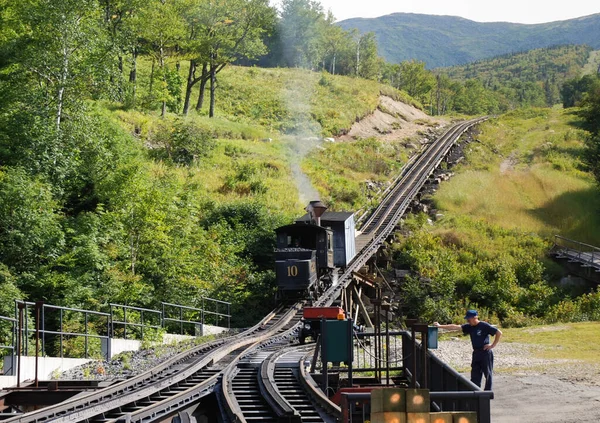
New Hampshire’s Mount Washington Cog Railway has been pushing passenger cars up the Northeast’s highest peak since 1869, using a rack-and-pinion system to climb grades as steep as 37 percent. The three-mile journey to the 6,288-foot summit provides constantly changing views of the White Mountain National Forest and five surrounding states.
Eco-friendly steam locomotives burn biodegradable fuel while climbing through multiple climate zones—passengers might start their journey in summer conditions and reach snow at the summit. The railway operates year-round, offering dramatically different experiences between summer’s green valleys and winter’s ice-covered landscape.
Durango & Silverton Narrow Gauge Railroad
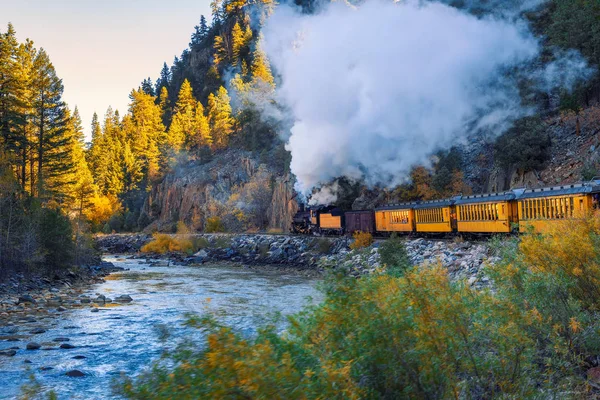
Colorado’s Durango & Silverton railroad follows the Animas River through San Juan National Forest, covering 45 miles of some of the most rugged terrain accessible by train in the lower 48 states. Coal-fired steam locomotives pull passengers through river canyons where sheer rock walls rise hundreds of feet on both sides of the narrow-gauge tracks.
The railway passes through sections of wilderness where no roads exist—some viewpoints are only accessible to train passengers and serious backcountry hikers. During autumn, aspen groves create golden corridors that contrast dramatically with the dark green conifers and red rock formations.
Like Travel Pug’s content? Follow us on MSN.
White Pass & Yukon Route

This narrow-gauge railroad climbs from sea level in Skagway, Alaska, to 2,865 feet at White Pass, crossing through portions of Klondike Gold Rush National Historical Park while providing views of glaciers, waterfalls, and alpine lakes. The engineering achievement required to build this railroad through such extreme terrain becomes apparent as the train navigates wooden trestles and carved granite ledges.
Passengers can see the original Chilkoot Trail below, where thousands of gold prospectors struggled up the same mountain pass during the 1890s rush. The international railway crosses into British Columbia, Canada, making it one of the few train rides that spans two countries while traversing protected parklands.
Great Smoky Mountains Railroad

North Carolina’s Great Smoky Mountains Railroad operates multiple routes that skirt the boundaries of Great Smoky Mountains National Park, offering views of the ancient mountain range through passenger car windows and open-air cars. The Nantahala Gorge excursion follows the Nantahala River through a deep canyon where whitewater rafters navigate rapids below while train passengers enjoy the scenery from above.
Seasonal foliage excursions coincide with peak autumn colors when the deciduous forests create a patchwork of red, orange, and gold across the mountainsides. The railroad uses both diesel and occasionally steam power, with the steam engines an authentic sensory dimension to the mountain experience.
Heber Valley Railroad
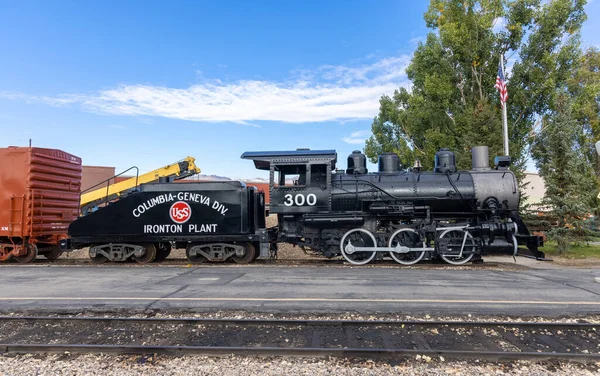
Utah’s Heber Valley Railroad travels through Wasatch Mountain State Park and portions of Uinta National Forest, providing views of Mount Timpanogos and other peaks in the Wasatch Range while crossing Deer Creek Reservoir. The railroad operates year-round with different themed excursions, including winter trips when the surrounding mountains are snow-covered and summer journeys when wildflower meadows bloom alongside the tracks.
Steam locomotives handle most of the regular passenger service, creating dramatic photo opportunities when the engine’s smoke plume contrasts against the mountain backdrop. The Provo Canyon Limited extends deeper into the canyon system, where sheer limestone walls create a natural corridor for both the railroad and the Provo River.
Like Travel Pug’s content? Follow us on MSN.
Cumbres & Toltec Scenic Railroad

This narrow-gauge steam railroad crosses the border between Colorado and New Mexico while traversing portions of Carson National Forest and San Juan National Forest on its 64-mile journey between Antonito and Chama. The railroad climbs to 10,015 feet at Cumbres Pass, making it one of the highest railway summits in North America and providing views across multiple mountain ranges.
Passengers experience authentic steam railroading as coal-fired locomotives work hard to pull vintage passenger cars through mountain passes where snow can occur even during summer months. The railway passes through aspen groves, alpine meadows, and high desert landscapes that change dramatically with elevation and season.
Conway Scenic Railroad
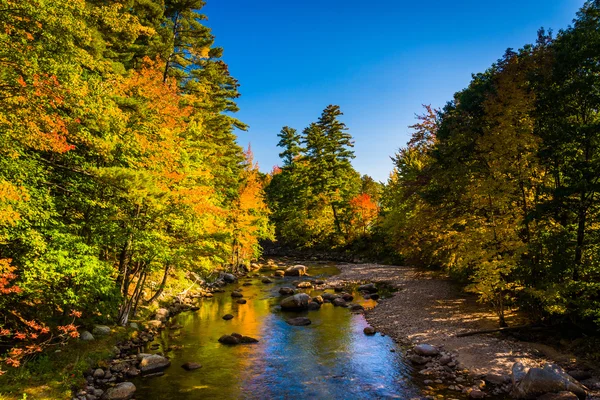
New Hampshire’s Conway Scenic Railroad operates multiple routes through White Mountain National Forest, including the Mount Washington Valley route that provides views of the Presidential Range and the Notch Train that travels through Crawford Notch State Park. The railroad uses both historic steam and diesel locomotives to pull restored passenger cars through mountain valleys where the Saco River creates natural clearings between forested slopes.
During autumn, the train travels through some of New England’s most photographed fall foliage, while winter excursions showcase snow-covered peaks and frozen waterfalls. The Notch Train specifically follows a route through Crawford Notch, where avalanche barriers and rock cuts demonstrate the engineering challenges of mountain railroading.
Roaring Camp Railroads
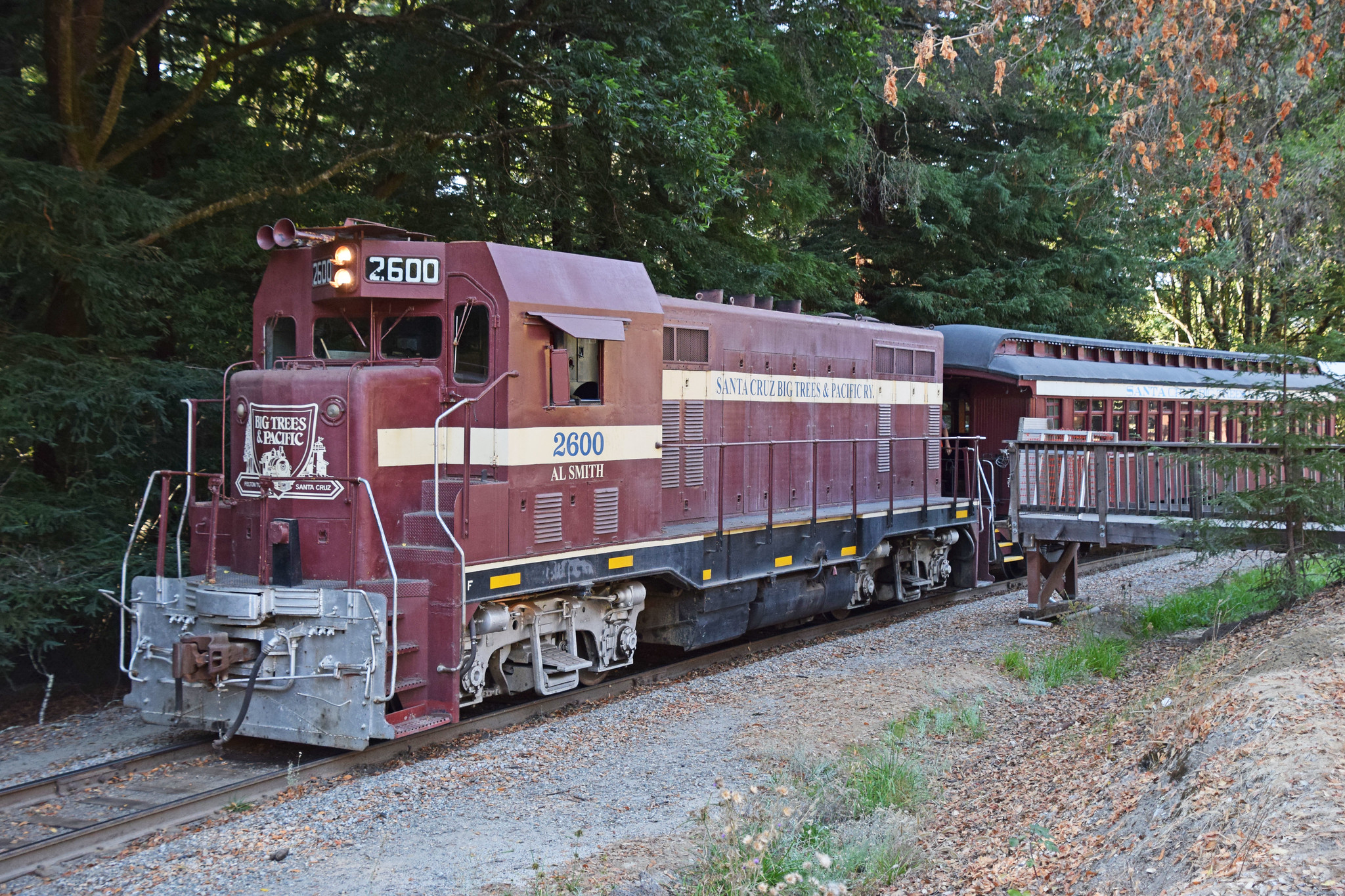
California’s Roaring Camp operates steam trains through Henry Cowell Redwoods State Park, where passengers travel through groves of ancient coast redwoods while narrow-gauge locomotives navigate steep grades and tight curves. The railroad’s steam engines date back to the 1890s and were originally used in logging operations throughout the Sierra Nevada mountains.
Passengers can look up through the train’s windows to see redwood canopies that are over 1,800 years old and reach heights of more than 250 feet. The Beach Train extension connects the redwood forest to Santa Cruz Beach Boardwalk, providing a unique combination of ancient forest and Pacific Ocean views during a single rail journey.
Like Travel Pug’s content? Follow us on MSN.
Leadville, Colorado & Southern Railroad

Colorado’s highest scenic railroad climbs from the historic mining town of Leadville to elevations above 11,000 feet, providing panoramic views of the Sawatch Range, including several peaks over 14,000 feet. The railroad follows portions of the original Denver & Rio Grande route through the Arkansas River Valley, while diesel locomotives handle the elevation changes that would challenge most steam engines.
Passengers travel through high-altitude environments where aspen groves and alpine wildflowers thrive during the brief summer growing season. The railroad operates within San Isabel National Forest, where mining artifacts and ghost towns create historical context for the mountain scenery.
Potomac Eagle Scenic Railroad
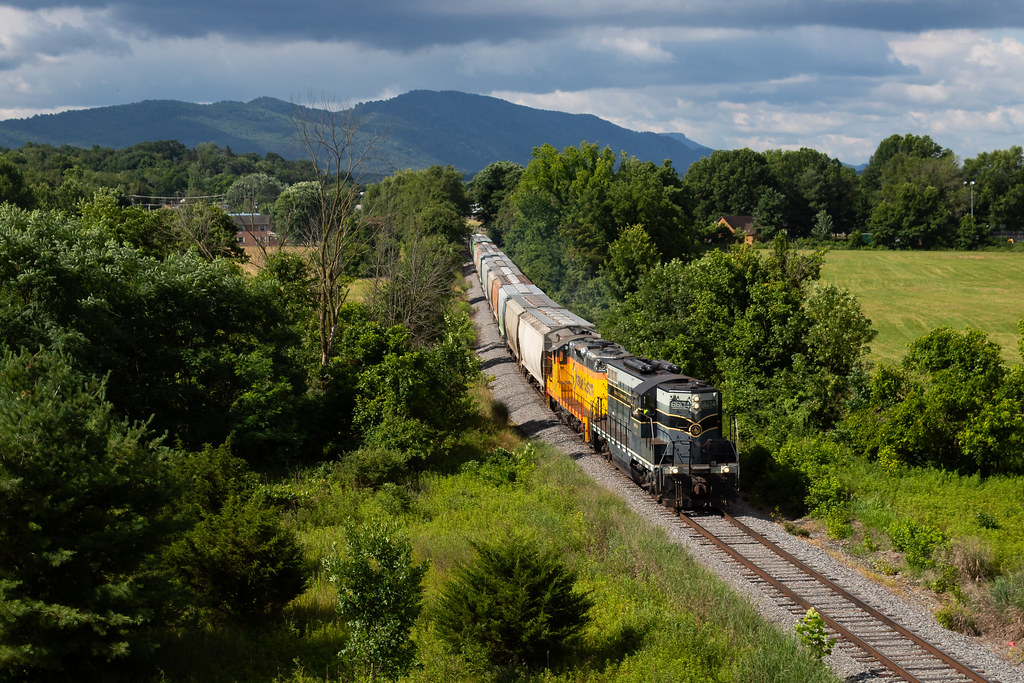
West Virginia’s Potomac Eagle follows the South Branch of the Potomac River through a remote valley where bald eagles nest and hunt, providing wildlife viewing opportunities that combine with Appalachian Mountain scenery. The railroad operates vintage passenger cars pulled by diesel locomotives through a corridor that’s inaccessible by road, making the train ride the only way to experience these particular river views.
Eagles are spotted on most trips during nesting season, while the surrounding George Washington National Forest provides a backdrop of forested ridges and limestone cliffs. The railroad crosses the Potomac River multiple times during its three-hour round trip, offering different perspectives of the same scenic valley.
Black Hills Central Railroad
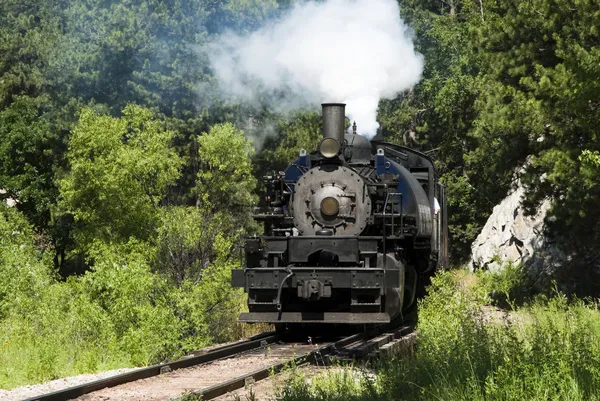
South Dakota’s Black Hills Central operates steam trains through Black Hills National Forest between Hill City and Keystone, providing access to some of the region’s most scenic terrain while passing near Mount Rushmore National Memorial. The railroad uses vintage steam locomotives that climb through ponderosa pine forests and granite rock formations that characterize the Black Hills region.
Passengers can see glimpses of the presidential sculptures carved into Mount Rushmore during portions of the journey, while the surrounding national forest provides habitat for deer, elk, and occasional mountain goats. The railway follows a historic route that connected mining communities during the late 1800s, with restored stations and period passenger cars maintaining the historical atmosphere.
Like Travel Pug’s content? Follow us on MSN.
Georgetown Loop Railroad
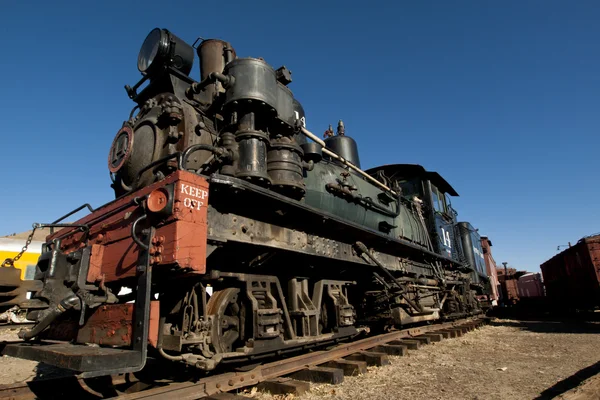
Colorado’s Georgetown Loop combines spectacular mountain scenery with impressive railroad engineering, using a complex series of bridges and curves to gain elevation in the narrow Clear Creek Canyon between Georgetown and Silver Plume. The narrow-gauge railroad crosses Devil’s Gate High Bridge, which stands 95 feet above the canyon floor and provides dramatic views of the surrounding peaks in Arapaho National Forest.
Steam locomotives handle the challenging grades while passengers enjoy views of mining ruins, mountain streams, and aspen groves that change with the seasons. The complete loop covers only a few miles but demonstrates how railroads conquered difficult mountain terrain during Colorado’s mining boom.
Rails Through Time
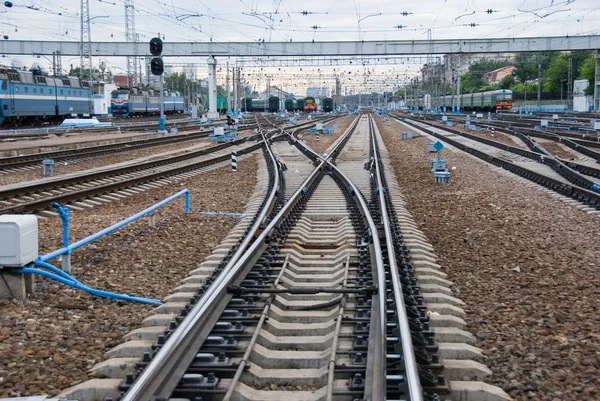
These train routes prove that some of America’s best national park experiences happen from a comfortable seat rather than a hiking boot. Whether you’re watching Mount McKinley emerge from Alaska wilderness or peering down into the Grand Canyon from a restored passenger car, rail travel adds a dimension of relaxation and perspective that’s hard to match.
The combination of historical authenticity, engineering marvels, and protected landscapes creates journeys that satisfy both the adventurous spirit and the desire for comfort—no camping required.
More from Travel Pug

- Cities Growing so Fast You Won’t Recognize Them in 10 Years
- 13 Destinations Where Tourists Regularly Regret Their Trip
- 16 U.S. Cities That Are Quietly Becoming Travel Hotspots
- Where to Travel If You Love Long Bus Rides and Daydreams
- 20 Cities Perfect for Solo Travelers Who Crave Adventure & Culture
Like Travel Pug’s content? Follow us on MSN.
